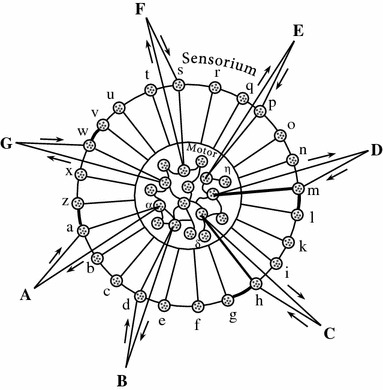Fig. 2.

A redrawn version of Harleß’ (1861, p. 62) schematic describing the physiological basis of the ideomotor mechanism. Elements in the centre of the schematic represent motor units (α, δ, η) which are able to evoke bodily movements (A, B, C) via appropriate connections. These movements, in turn, produce sensations (a, b, c). Only these sensations can be controlled by the “will” and they project back to associated motor units
